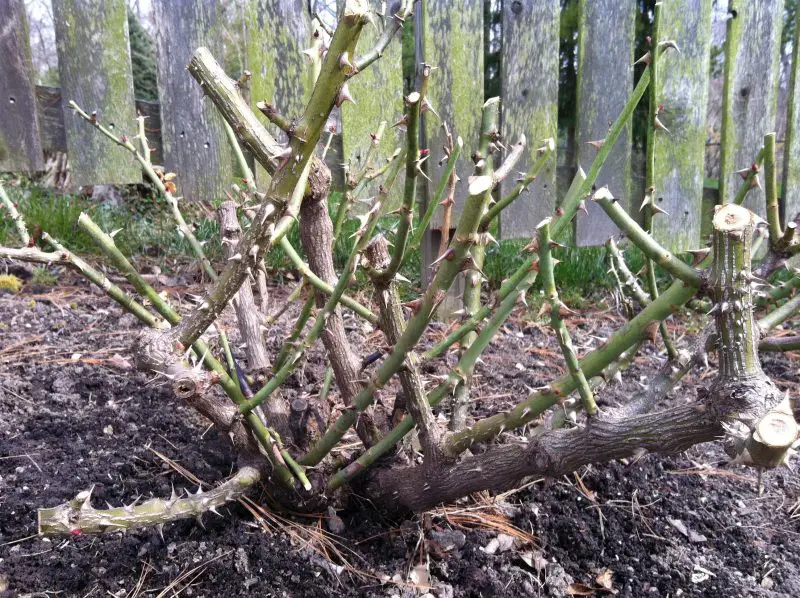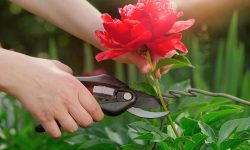Roses are among the most beloved flowering plants in gardens, admired for their stunning blooms and delightful fragrance. However, achieving those perfect, abundant flowers requires proper care, and pruning is one of the most essential tasks. Knowing exactly when to prune rose bushes can make the difference between a bush full of vibrant blossoms and one with sparse, weak flowers.
Pruning not only shapes the plant but also encourages healthy growth, improves air circulation, and stimulates new shoots that produce bigger and more colorful blooms. Understanding the right timing and technique ensures that rose bushes remain healthy and continue to provide breathtaking displays throughout the growing season.
Understanding Why Pruning Is Essential for Roses

Pruning is more than just cutting away dead stems; it’s a horticultural practice that influences the plant’s overall health and flowering potential. Roses produce their best blooms on new, vigorous growth, and pruning stimulates the development of these fresh shoots.
Removing old, woody canes allows the plant to redirect energy to younger stems, which are more productive and capable of supporting larger flowers. Pruning also eliminates diseased or damaged stems, preventing the spread of infections and reducing pest problems.
A well-pruned rose bush has better airflow through its center, which reduces humidity levels that encourage fungal diseases such as powdery mildew and black spot. Additionally, shaping the plant through pruning creates a balanced structure that can withstand strong winds and heavy rainfall without breaking.
Determining the Best Time to Prune Rose Bushes
The timing of pruning depends largely on your climate and the type of rose you are growing, but in general, the best time is in early spring.
Pruning in Early Spring for Maximum Bloom Production
The ideal moment to prune is just as the plant begins to emerge from dormancy, usually when buds begin to swell, and new reddish or green shoots appear along the canes. At this stage, the rose bush has stored enough energy in its roots to recover quickly, and pruning encourages rapid growth.
Pruning too early in winter can expose the plant to frost damage, while pruning too late can waste valuable energy that the plant has already invested in producing new shoots. Early spring pruning gives roses a head start for the growing season, ensuring an abundance of healthy blooms.
Recognizing Regional Differences in Pruning Time
In colder regions, rose pruning typically occurs after the last hard frost, as cutting too early can result in frost damage to tender new growth. Gardeners in warmer climates may prune earlier, sometimes as early as late winter, because roses begin growing sooner in mild weather.
Paying attention to local weather patterns and watching for bud swelling on your roses is the best way to determine the precise timing.
How to Identify Canes That Need Pruning
Not all parts of a rose bush should be cut back the same way. Identifying which canes to prune ensures you remove only the wood that hinders growth.
Removing Dead and Diseased Wood
Dead or diseased wood appears dry, brittle, or discolored and should always be removed first. Cutting away these canes improves plant health and prevents disease from spreading to healthy stems.
Cutting Out Weak and Crossing Canes
Thin, spindly canes often produce small, inferior blooms and should be removed to allow the plant to focus its energy on stronger stems. Crossing canes that rub against each other can cause wounds, making the plant vulnerable to infections. By eliminating these, you maintain a healthy, open structure.
Keeping the Youngest, Healthiest Canes
Strong, green canes with firm, healthy bark are the ones that will produce the best flowers. Keeping these and encouraging new growth from the base ensures continuous bloom production throughout the season.
Techniques for Pruning Roses Effectively
Pruning technique affects how quickly the plant heals and how it directs new growth. Proper cuts stimulate healthy shoot production and reduce the risk of disease.
Making Clean, Angled Cuts
Always use sharp pruning shears to make clean cuts that heal quickly. Cuts should be made at a 45-degree angle, just above an outward-facing bud. This encourages new growth to develop outward, creating an open, vase-shaped plant that improves air circulation.
Avoid leaving stubs above buds, as these can rot and attract pests. Cutting too close to a bud can damage it, so always leave a small space.
Shaping the Plant for Balanced Growth
When pruning, aim for an open-center shape that allows sunlight and air to penetrate the middle of the bush. This not only improves flowering but also keeps the plant healthy by reducing humidity.
Maintain a balance between older structural canes and younger, vigorous shoots. A mix of mature wood for stability and new wood for flower production ensures long-term health.
Pruning Different Types of Rose Bushes
Different types of roses respond differently to pruning, so understanding your rose variety helps you get the best results.
Hybrid Tea and Floribunda Roses
Hybrid tea roses and floribundas bloom on new wood, making them ideal candidates for more aggressive spring pruning. Cutting back to outward-facing buds about one-third of the way down the cane encourages strong, upright growth and larger blooms.
Shrub and Landscape Roses
Shrub roses require lighter pruning, focusing mainly on removing dead or weak wood. They naturally grow into a more informal shape, and light shaping helps maintain their fullness without sacrificing flowers.
Climbing Roses
Climbing roses bloom primarily on older canes, so heavy pruning can reduce flowering. Instead, remove only dead or weak stems and lightly thin out overcrowded canes. Tie strong canes to supports to encourage lateral branching, which produces more blooms.
Aftercare Following Pruning
Proper care after pruning helps roses recover quickly and encourages healthy new growth.
Feeding and Watering After Pruning
Once pruning is complete, apply a balanced fertilizer to stimulate strong shoot production. Deep watering after fertilizing helps nutrients reach the roots, but avoid overwatering, as soggy soil can lead to root rot.
Mulching to Retain Moisture and Suppress Weeds
Adding a layer of organic mulch around the base of the rose bush conserves soil moisture, suppresses weeds, and keeps roots cool as the plant begins vigorous spring growth.
Monitoring for Pests and Diseases
Freshly pruned roses are vulnerable to pests and fungal diseases. Inspect regularly and treat early signs of problems with organic or chemical controls as necessary.
Common Mistakes to Avoid When Pruning Roses
One common mistake is pruning too early or too late, which can damage new shoots or reduce flowering. Cutting too much at once can also stress the plant, while cutting too lightly can leave the rose congested with old wood, resulting in fewer blooms.
Another mistake is using dull or dirty tools, which cause ragged cuts that heal slowly and increase the risk of infection. Always sanitize pruning shears between cuts, especially when removing diseased wood.
Encouraging Continuous Blooms After Pruning
Pruning is not a one-time task for roses. Deadheading, or removing spent blooms during the growing season, encourages the plant to produce more flowers instead of forming hips. Light shaping throughout the season keeps the bush tidy and stimulates further blooming.
Feeding regularly during the growing season and watering consistently also contribute to continuous flower production, ensuring that your rose bushes remain a stunning centerpiece in the garden.
FAQs About Pruning Rose Bushes
When is the best time to prune rose bushes for maximum blooms?
The best time is early spring, just as new buds start to swell. This timing encourages strong growth and abundant flowers.
Can pruning roses too early damage the plant?
Yes, pruning too early in winter exposes fresh cuts to frost damage, which can kill new shoots and reduce bloom production.
How much should I cut back my rose bushes in spring?
Cut back about one-third of the healthy canes, focusing on removing dead or weak stems to stimulate new, flower-producing growth.
Do different types of roses require different pruning methods?
Yes, hybrid teas need harder pruning, while shrub and climbing roses require lighter shaping to maintain blooms.
What should I do after pruning to help roses bloom better?
Feed with a balanced fertilizer, water deeply, and mulch to retain moisture. Regular monitoring prevents pests and diseases.
Conclusion
Knowing when to prune rose bushes is the key to achieving the most beautiful blooms. Pruning at the right time in early spring, just as new growth begins, gives roses the energy and structure they need to produce large, vibrant flowers. Removing dead, diseased, and weak canes, shaping the plant for airflow, and caring for it properly afterward ensures a healthy and productive rose bush.
With the right timing and technique, your roses will reward you with breathtaking displays of color and fragrance, making all the effort worthwhile season after season.






